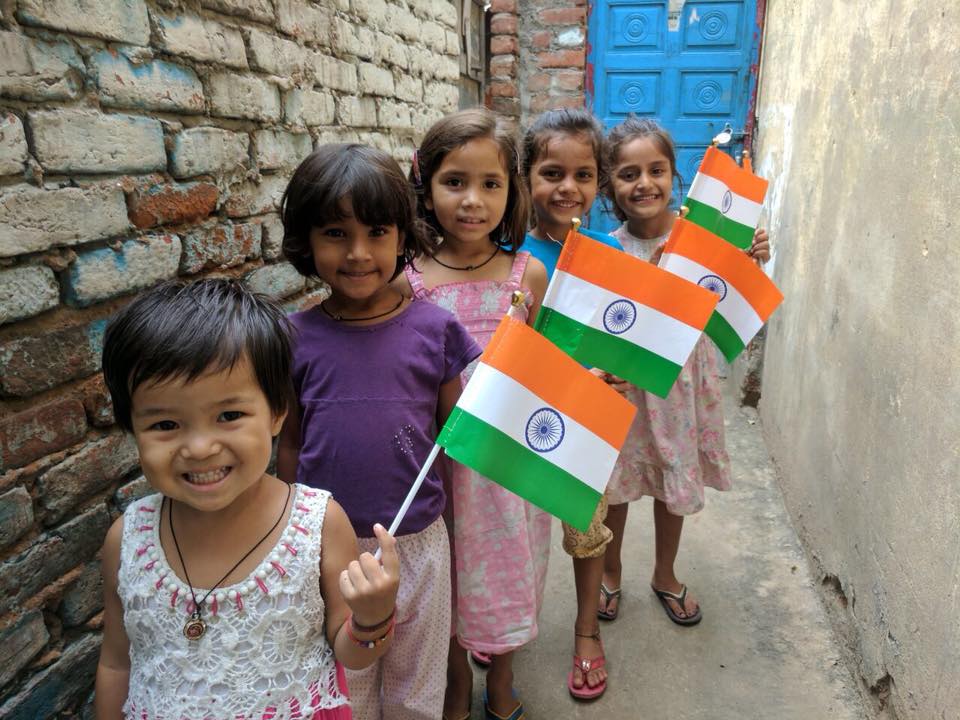At 13, Meera can calculate the area of a triangle faster than she can find a quiet place to study. Living in a dense informal settlement on the edge of Gurugram, India’s financial hub, she shares a single-room home with five family members, no desk, and only intermittent electricity. And yet, this year, she topped her class in science—thanks to a modest but methodically designed STEM programme of Smile Foundation that focused not on smart boards or silicon chips, but on building conceptual clarity, numerical fluency, and gender-sensitive teaching in one of India’s most overlooked urban margins.
Her story is not unique but what makes it remarkable is that it signals something larger: how small, targeted interventions can ignite systemic transformation. In a world scrambling to prepare youth for AI-driven futures, this initiative is a quiet but potent reminder that before we teach machine learning, we must first teach how to learn—equally, inclusively, and from the ground up.
STEM education as a social mobility engine—But for whom?
STEM education is now universally acknowledged as a critical lever for economic growth, innovation, and social mobility. From India’s National Education Policy (NEP 2020) to Africa’s Continental Education Strategy and the U.S. CHIPS and Science Act, the global consensus is clear: tomorrow’s citizens must be prepared not just to use technology, but to shape it.
Yet, for millions of children in low-income, rural, and underserved urban communities, this vision feels abstract. Globally, 70% of 10-year-olds in low-income countries cannot read or do basic math—a phenomenon the World Bank calls “learning poverty.” Even in countries with rising STEM investments, access to quality education remains uneven, especially for girls, first-generation learners, and children in informal settlements.
Smile Foundation’s STEM intervention (a part of its flagship initiative Mission Education) at its Shiksha Education Center in Mohyal Colony, Gurugram, offers a rare glimpse into what it takes to bridge that gap—not through high-budget tech but through thoughtful pedagogy and data-informed strategy.
Inside the intervention: What Smile Foundation did differently
Implemented over the 2023–24 academic year, this initiative targeted students in Grades 6 to 8, many of whom were first-generation learners from working-class families. The approach was built on three pillars:
- Baseline-Endline Assessment: Students took diagnostic tests at the start and end of the year, measuring performance across four cognitive categories: conceptual, numerical, factual, and analytical.
- Hands-On, Inclusive Pedagogy: Teachers deployed inquiry-based methods, real-world examples, and visual aids—designed to counter rote learning and foster actual understanding.
- Gender-Responsive Design: Equal participation from girls was encouraged, and results were disaggregated by gender to inform future design.
This wasn’t just a school-year add-on—it was a structured experiment in how children learn, and what kind of inputs actually lead to better outcomes in STEM.
What the data tells us: Growth and gaps
The endline results are cautiously optimistic. Across all three grades, students improved their average scores in science and mathematics:
- Grade 6: From 40.5% to 46.5%—with notable gains in science factual and math numerical sections.
- Grade 7: From 36.8% to 39.4%—with girls outperforming boys in both subjects.
- Grade 8: From 44.4% to 52.7%—the strongest gains, especially in science conceptual and math numerical areas.
Yet, the data also spotlight persistent gendered learning patterns. Girls tended to excel in science conceptual understanding and factual recall, while boys outperformed in numerical and analytical mathematics. For example, in Grade 8 math, boys exceeded girls by 30+ percentage points, while girls showed a 12-point advantage in science conceptual areas.
This divergence mirrors global patterns. In many contexts, girls are less exposed to logic-intensive environments or may internalize stereotypes that discourage competitive math engagement. Boys, conversely, may lack reinforcement in inquiry-based science. The solution isn’t to “equalise” pedagogy—but to diversify it.
What worked and why it matters
Several elements in Smile’s STEM model explain the gains:
- Inquiry-Led Instruction: Replacing rote memorisation with real-world problem-solving empowered students—particularly girls—to visualise concepts and connect theory to life.
- Feedback Loops: Frequent quizzes and diagnostic tools enabled dynamic instruction, where learning gaps were identified and addressed in real time.
- Neutralized Pressure Zones: Without high-stakes exam pressure, students were more willing to engage, make mistakes, and ask questions—key to deep learning.
- Culturally Aware Design: Teachers who understood the local context could tailor instruction to the social and linguistic background of learners, avoiding the alienation many first-gen students feel in STEM classrooms.
In short, the initiative proved that effective STEM education doesn’t always need smart classrooms—it needs smart, context-sensitive pedagogy.
Global parallels: Echoes from Brazil, Kenya, and Nigeria
The Gurugram project is not isolated. Across the Global South, other grassroots STEM efforts reinforce its lessons:
- Brazil: FUNAI-backed STEM initiatives in Amazonian regions use bilingual instruction in Tupi and Portuguese. These culturally contextualised models have shown increased retention and enthusiasm among Indigenous girls.
- Kenya: The Tusome and PRIEDE programmes improved learning outcomes through coaching, simplified materials, and classroom-level assessments—much like Smile’s modular, category-based approach.
- Nigeria: The UNESCO-supported “STEM Café” in Lagos uses low-cost materials and community centers to create safe, co-ed environments where children can experiment, explore, and learn collaboratively.
Each of these models—and Smile’s in India—proves that innovation doesn’t require reinvention. It requires careful listening, local trust, and a feedback-driven model that can evolve with learners.
Policy lessons: From Pilot to scalable blueprint for STEM education
Smile Foundation’s programme is a high-potential blueprint, but for wider system adoption, a few key shifts are essential:
- Integrate STEM Baselines into Public Education
India’s NEP 2020 calls for measuring “learning outcomes” but lacks structured diagnostic tools in middle school STEM. Smile’s conceptual-numerical-analytical model offers a replicable framework. - Expand Gender-Responsive Teaching Methods
Classroom strategy must go beyond “equal access.” It should include differentiated learning approaches, role-model interventions, and confidence-building tools that respond to how boys and girls experience STEM differently. - Invest in Middle School as the Pivot
Most STEM interventions focus either on primary basics or post-secondary skills. But Grade 6–8 is the inflection point—where interest is either sparked or snuffed out. Targeting this band pays long-term dividends. - Leverage NGO-Government Collaborations
Smile Foundation’s ecosystem experience—teacher recruitment, curriculum design, and impact tracking—should be formally embedded in state and central education frameworks. The NGO-government hybrid model works, and should be resourced accordingly.
The future of STEM education lies in the margins
In a decade when countries are pouring billions into AI, climate tech, and digital literacy, it is easy to forget the simple math class in an overcrowded room on the urban fringe. But that’s exactly where tomorrow’s innovation will—or will not—be born.
What Smile Foundation’s project shows us is that shift doesn’t always begin with broadband or robots. Sometimes it begins with a worksheet, a quiet explanation, and a girl named Meera who learns—maybe for the first time—that she is capable of mastering complexity.
In a world obsessed with scale (a topic that we shall discuss in one of our future blogs), this intervention reminds us that impact begins with intentionality. The future of STEM—and of equity—depends not on how fast we teach machines to think, but how patiently we teach every child to believe they can.










